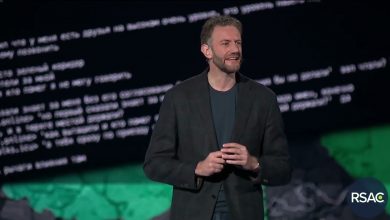 In an era where information is power, the United States government’s IT infrastructure stands as a critical pillar of national security, public service, and economic stability.
In an era where information is power, the United States government’s IT infrastructure stands as a critical pillar of national security, public service, and economic stability.
Yet, this digital fortress faces an unrelenting siege from hackers—state-sponsored adversaries, cybercriminals, and hacktivists—who seek to exploit its vulnerabilities for espionage, disruption, or sabotage.
From the 2015 Office of Personnel Management breach that exposed the personal data of over 21 million individuals to the 2020 SolarWinds attack that infiltrated multiple federal agencies, these incidents reveal a sobering truth: no system is impervious.
Legacy technology, fragmented oversight, supply chain risks, and a shortage of cybersecurity talent compound the threat, leaving critical systems—from defense networks to public utilities—exposed to catastrophic breaches. The consequences are profound, threatening national security, economic stability, and public trust. As emerging technologies like quantum computing and AI reshape the battlefield, the stakes have never been higher. This is the story of an invisible war—one we cannot afford to lose.
Nature of the Threat
Hackers, including state-sponsored actors, cybercriminals, and hacktivists, target government IT infrastructure to achieve various objectives:
- Data Theft: Sensitive information, such as classified documents, citizen data (e.g., Social Security numbers), or military intelligence, is a prime target. For example, the 2015 Office of Personnel Management (OPM) breach exposed personal data of over 21 million individuals, attributed to Chinese state-sponsored hackers.
- Espionage: Nation-states like China, Russia, Iran, and North Korea conduct cyber espionage to gain strategic advantages. The 2020 SolarWinds attack, linked to Russia, compromised multiple federal agencies by exploiting supply chain vulnerabilities.
- Disruption: Ransomware and distributed denial-of-service (DDoS) attacks can paralyze government operations. In 2021, the Colonial Pipeline ransomware attack (though not directly government-targeted) highlighted vulnerabilities in critical infrastructure, which shares similarities with government systems.
- Sabotage: Advanced persistent threats (APTs) could manipulate or destroy critical systems, such as those controlling power grids, defense networks, or financial systems. A hypothetical attack on the Department of Defense’s SIPRNet could disrupt military communications.
- Influence Operations: Hackers may leak sensitive data to undermine public trust or influence policy, as seen in the 2016 Democratic National Committee (DNC) email hack, attributed to Russian actors.
Vulnerabilities in Government IT Infrastructure
Several factors make government systems susceptible:
- Legacy Systems: Many agencies rely on outdated technology (e.g., Windows XP or COBOL-based systems), which are no longer supported and lack modern security patches. A 2019 GAO report noted that 70% of federal IT systems were past their end-of-life.
- Fragmented Oversight: The decentralized nature of federal IT, with over 100 agencies managing their own systems, leads to inconsistent security standards. The Cybersecurity and Infrastructure Security Agency (CISA) struggles to enforce uniform protocols.
- Supply Chain Risks: Third-party vendors, like SolarWinds, introduce vulnerabilities. The 2020 attack exploited a compromised software update, affecting agencies like DHS and Treasury.
- Insider Threats: Employees or contractors with access can inadvertently or deliberately compromise systems. The Edward Snowden leaks (2013) exposed NSA vulnerabilities from within.
- Resource Constraints: Budget limitations and a shortage of skilled cybersecurity professionals hinder robust defenses. The federal government competes with the private sector for talent, with 30,000+ unfilled cybersecurity jobs reported in 2023.
Implications of Successful Attacks
- National Security: Compromised defense systems could weaken military readiness or expose strategic plans.
Economic Impact: Attacks on financial or tax systems (e.g., IRS) could disrupt revenue collection or economic stability. - Public Safety: Breaches in infrastructure like air traffic control or emergency services could endanger lives.
Erosion of Trust: Data leaks or service disruptions undermine public confidence in government institutions.
Current Mitigation Efforts
- CISA Initiatives: CISA’s Continuous Diagnostics and Mitigation (CDM) program monitors federal networks, while the National Cybersecurity Protection System (EINSTEIN) detects intrusions.
- Zero Trust Architecture: Agencies are adopting zero trust models, requiring continuous verification of users and devices, as mandated by Biden’s 2021 Executive Order on Cybersecurity.
- Public-Private Partnerships: Collaboration with tech firms enhances threat intelligence sharing, though tensions over data privacy persist.
- Legislation: Laws like the Federal Information Security Modernization Act (FISMA) mandate regular audits, but compliance gaps remain.
Future Challenges
Hackers pose a multifaceted threat to American government IT infrastructure, exploiting outdated systems, supply chain weaknesses, and human errors.
- Emerging Technologies: Quantum computing could render current encryption obsolete, while AI-powered attacks may exploit vulnerabilities faster than defenses can adapt.
- Geopolitical Tensions: Escalating conflicts with adversaries like China or Russia increase the likelihood of sophisticated cyberattacks.
- Workforce Gaps: The cybersecurity skills shortage is projected to worsen, with a global deficit of 4 million professionals by 2026.
While mitigation efforts like zero trust and CISA programs are steps forward, the scale, sophistication, and persistence of attacks demand accelerated investment in modernizing systems, workforce development, and proactive defense strategies. Without these, the risk of catastrophic breaches will grow.



